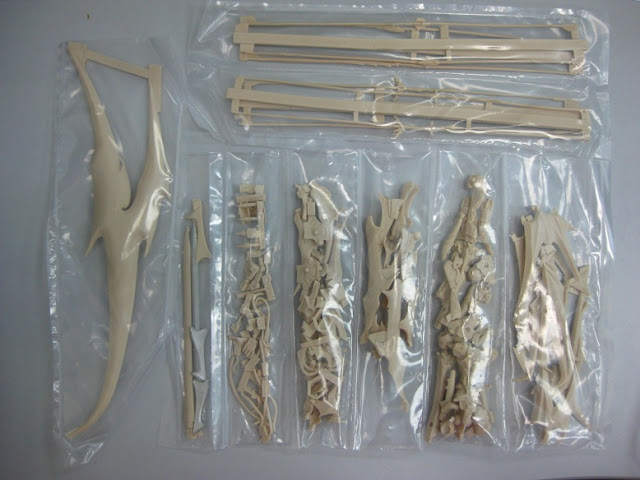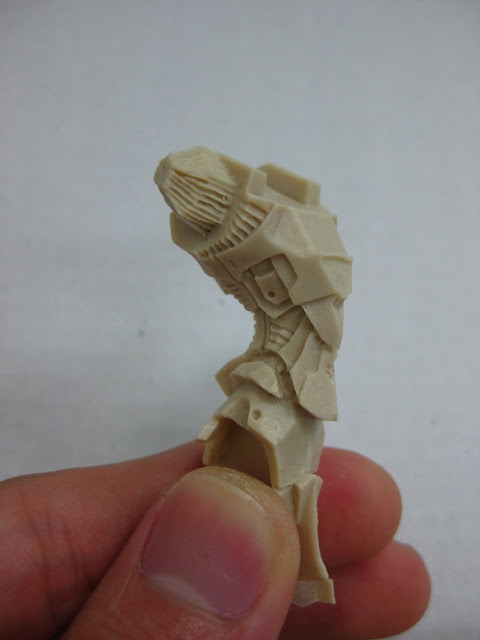As an update, I found that most of the parts of the L.E.D. Mirage kit were rather damaged. I assumed that this was a result of prolonged exposure of the parts to a variety of chemicals and solvents which include lacquer paint solvents, Dettol, alcohols and caustic soda which were used for paint stripping and cleaning of the parts. Hence, as a result, I've decided to brush paint the parts individually without priming in order to minimise further damage to the parts and also to preserve the details as re-scribing would damage the parts further. As it was also a rather old kit, I also decided to minimise the cost for the reconstruction as well.
Painting Models: A cheaper alternative
For this project, I've decided to experiment with regular weather-safe gold paint which I got from a local hardware store. The guy at the store told me that the paint can be thinned with water and hence, I thought, would be easy to paint with and clean up afterwards. I tested the paint on a piece of scrap plastic and I found that the paint was the perfect shade of gold that I was looking for. The paint was water soluble and rather quick to dry (~15 minutes) with light coats and was water resistant after drying which led me to believe that the paint was some sort of acrylic paint.
It was then that I had an interesting idea. The paint could be thinned with water and hence, must be water-based. So, what happens when I add other water based paints/pigments to the gold paint? Could I have different shades of gold or other colours? I tried mixing the gold paint with some watercolours that I had with me and found that the two different paints could actually mix together quite well. I tested the mixed paint on some scrap plastic and I found that the mixed paint retained the properties of acrylic paints and was water resistant after complete drying. I also notice that the water resistant properties of the mixed paint started to decrease when the ratio of watercolour to acrylic gold pain was increased. Hence, it can be concluded that the watercolour and the gold acrylic paint could be mixed and remain water resistant as long as the watercolour remains below a certain threshold.
 |
| From top left: Standard weather-resistant acrylic gold paint from my local hardware store, watercolours, some glow-in-the-dark fabric paint that I thought would be great for the eyes; Middle: Masking tape, Art liners for panel lines etc., a medium gauge brush and a fine brush for detailing; Bottom: large soft brush for dusting parts before painting. |
Painting the parts of the L.E.D. Mirage
Although the gold paint I used was rather inexpensive (less than $3 for a 100ml bottle), the pigment load for the paint was horribly low. I had to apply a minimum of 5 coats of undiluted paint before an opaque coat could be achieved. I blended different watercolours with the gold acrylic paint to produce the other colours that I used in this project. I then did a wash with watercolours over the individual parts to raise details and panel lines. I also mixed black watercolours with the gold paint and dry-brushed it onto the back part of the leg armour to produce a weathering effect. It took me more than 2 weeks just to paint all the parts of the kit. I'd have to say that overall, the hardware store-bought gold paint worked out quite well with the kit. Although the pigment load was rather poor and the pigment grain was rather coarse, I think it did a good job of giving a realistic natural weathered golden-metal feel to the kit. I also decided to not give the parts a top coat as the paint already had a matt-like finish to it.







(-_-)...zzZ





















































